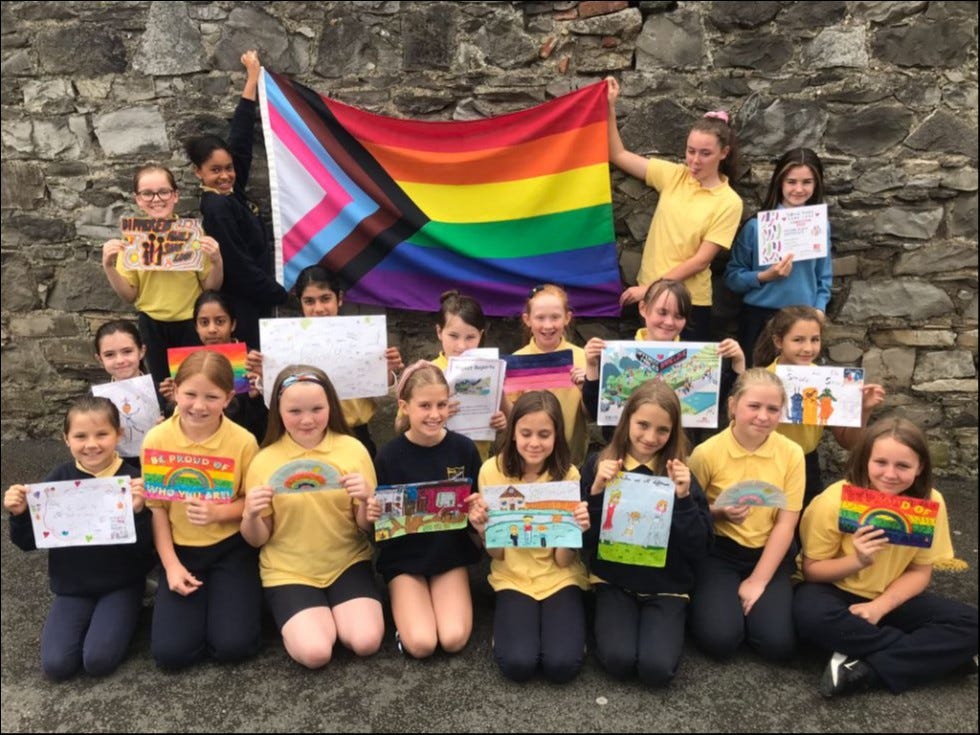Bright Colours, Dark Coding
Ideological Capture and Narratives in Kids’ Media, Gaming, and Curriculum
Introduction: Why Target Children?
Children are the most valuable audience on earth — not because they hold purchasing power, but because they hold future compliance. They absorb norms before they acquire skepticism. Their cognitive filters are still forming, their trust is instinctive, and their sense of “normal” is whatever the environment presents.
Where adults can be argued with, children can be coded. The cartoons, games, apps, and lessons are the bright packaging; the payload is ideological alignment. What begins as entertainment or “education reform” often functions as cultural installation — values pre-loaded before critical faculties exist.
Functional Alignment: Why It Looks the Same Everywhere
When you compare kids’ cartoons, classroom materials, and “serious games” across countries, you notice remarkable convergence. The same themes appear:
Identity politics as the primary moral compass.
Environmental crisis as the unquestionable backdrop.
Safety and inclusion as absolute priorities.
Suspicion of tradition and valorisation of disruption.
Digital mediation as default reality.
This is not organic. It maps directly to:
Shared institutional language (UNESCO, UNICEF, World Bank, OECD all circulate near-identical guidelines).
Funding frameworks (philanthropic foundations, government grants, ESG-linked corporate sponsorships).
Policy cascades (national curricula tied to SDGs, climate targets, “21st century skills” initiatives).
The result: a child in London, Lagos, or Los Angeles is being steeped in different local cartoons, same moral coding.
The Narrative Architecture
1. The Hero’s Journey Rewritten
Traditional kids’ stories valorised courage, loyalty, and sometimes rebellion against tyranny. The new template valorises recognition of systemic injustice, celebration of identity discovery, and alignment with collective safety.
Old Story: defeat the dragon.
New Story: realise the dragon is misunderstood, but beware the villagers who are intolerant.
2. Bright Packaging, Dark Payload
Animation: saturated colours, smooth character design, constant affirmation.
Subtext: moral inversion (strength = threat, weakness = virtue, dissent = danger).
Mechanism: narrative sugar to smuggle ideological medicine.
3. Gamified Morality
Video games have always trained skills — hand-eye coordination, problem-solving. Today’s trend: embedding ideological objectives as win conditions.
“Build a sustainable city” = UN climate framework in game mechanics.
“Stop misinformation” = censorship logic coded as gameplay.
“Choose your identity” = personality reduced to checkbox politics.
The reward system is compliance with the narrative. Failure to align is not just “losing a game” but being cast as harmful, exclusionary, or ignorant.
4. Curriculum as Operating System
SDG modules: every subject bent toward climate, inclusion, and equity narratives.
Assessment rubrics: grading not just knowledge, but “attitudes and values.”
Teacher training: alignment enforced upstream so dissenting educators self-censor.
The curriculum becomes less about transmitting knowledge and more about ensuring the next generation internalises global institutional priorities.
Global Policy and Funding Frameworks
United Nations & UNESCO
Push the Sustainable Development Goals into education, culture, and media.
Programs like Education for Sustainable Development (ESD) explicitly tie classroom content to climate, equity, and digital citizenship.
Philanthropic Foundations
Gates, Rockefeller, Ford, etc. fund “educational innovation,” “inclusive curricula,” and game development grants.
Outcomes always align with broader institutional agendas — health compliance, climate urgency, diversity metrics.
Corporations
Disney, Netflix, Roblox, Epic Games integrate messaging into global IP.
Partnerships with NGOs and ministries mean media is co-developed with “awareness campaigns.”
Governments
Tie funding to alignment: only schools that integrate approved narratives get grants.
Procurement contracts for “digital learning platforms” hardwire the ideological payload.
Shifting the Overton Window Early
The genius of targeting children is that it moves the boundaries of the possible without debate. By the time today’s 8-year-old becomes tomorrow’s voter, the slogans that felt radical in 2020 will feel like nursery rhymes.
Climate: “Net Zero” isn’t a contested policy — it’s the background moral fact.
Speech: “Words are violence” isn’t an absurdity — it was a Saturday cartoon plot.
Identity: “Self-definition overrides biology” isn’t controversial — it was a school poster.
Digital ID: “Log in to live” isn’t authoritarian — it was the only way to play.
The Overton window doesn’t shift through argument — it shifts through childhood immersion.
Dominion Lens: Bright Colours, Dark Coding
Seen through the Destabilise → Centralise → Dominate cycle:
Destabilise: weaken traditional anchors (family, nation, religion, shared history) by recoding them as harmful, exclusionary, or outdated.
Centralise: replace those anchors with universal frameworks — “global citizenship,” “planetary health,” “inclusion metrics.”
Dominate: enforce alignment through algorithms (games), policy (curriculum), and media (shows). By adulthood, compliance is unconscious.
Conclusion: The Future Is Branded in Childhood
The cultural battleground isn’t universities or newsrooms — it’s Saturday morning cartoons, Roblox minigames, and the Year 6 classroom. What looks like harmless fun is the rehearsal of tomorrow’s political reality.
Bright colours. Dark coding.
The buildings and textbooks remain, but the subroutines running in young minds have been rewritten. By the time the child becomes an adult, the world has already shifted — not by vote, not by accident, but by design.



🤦♀️